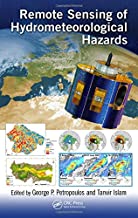Geoinformation Technologies for Geo-Cultural Landscapes : European Perspectives
Original price was: ₹16,155.00.₹12,924.00Current price is: ₹12,924.00.
ISBN: 9780415468596
Author/Editor: Oliver Bender
Publisher: CRC Press
Year: 2008
1 in stock (can be backordered)
Description
The focal main objective of the book is to constitute a meaningful linkage among research problems, geoinformation methods and corresponding applications. The research goals, related both to theoretical and practical issues, derive from multidisciplinary fields such as archaeology, history, geography, landscape planning, environment, geoinformation science, geology and geomorphology. All the aforementioned scientific areas have the spatial dimension in common, i.e. the vast amount of spatially referenced data. Their research issues can be addressed and analysed with geoinformation technology; though, the researchers should get familiar to the range of available geoinformation methods. The book provides description of a variety of research problems issues and technological ?olutions?pproaches that can be used to support processes of data capturing, mapping and analysis. These techniques and concepts are illustrated on numerous practical examples. along with specific examples, where these have been applied. The current structure of the book includes the following four chapters: introduction, data capturing and mapping, analysis and modelling, and study cases. In the following we provide a more detailed content of each chapter listing the main topics included within the selected articles.
Additional information
| Weight | 0.7 kg |
|---|
Product Properties
| Year of Publication | 2008 |
|---|---|
| Table of Contents | 1. Introduction Research components linking papers Data quality, scales, errors and accuracy What is geo-cultural landscape Are we interested in what modern man caused to the landscape? 2. Data capturing and mapping Introduction Vertical photogrammetry Oblique aerial photography Lidar High resolution satellite image interpretation Global Positioning Systems Field data collection Vectorisation and rectification of historical maps Technical concept of WebGIS 3. Analysis and modeling Introduction Surface modelling Linear landscape features Landscape characterisation Land use analysis Landscape metrics Geo-cultural modeling Visualisation 4. Case Studies a. Roscommon, Ireland Title: The application of digital vertical aerial photogrammetry in the recording and analysis of archaeological landscape Research topic: Economic viability of a digital photogrammetric solution to the archaeological research community. b. Lincolnshire, Great Britain Title: Shedding light on the past: using lidar to understand ancient landscapes Research topic: Use of lidar in archaeological research c. Thira, Akrotiri, Greece Title: Palaeogeomorphological Study of Akrotiri ancient harbour. Research topic: Palaeogeomorphology of Thira Island in pursuit of the location of the harbour of the prehistoric settlement. d. Vindobona, Austria Title: Surface reconstruction of Roman Vindobona. Research topic: Real time surface-modelling and interpolation and reconstruction of ancient lagre scale occupation layers in presently dens overbuilded areas e. Eastern Andalusia, Spain Title: GIS landscape models for the study of pre-industrial settlement patterns in Mediterranean areas. Research topic: Long term landscape study integrating settelements belonging to several periods in a diachronic analysis. f. Potenza valley, Italy Title: Surface reconstruction of Roman Vindobona. Research topic: Real time surface-modelling and interpolation and reconstruction of ancient lagre scale occupation layers in presently dens overbuilded areas g. Eastern Andalusia, Spain Title: GIS landscape models for the study of pre-industrial settlement patterns in Mediterranean areas. Research topic: Long term landscape study integrating settelements belonging to several periods in a diachronic analysis. h. Potenza valley, Italy Title: Geo-cultural landscapes from the sky. Research topic: Overview of the most important steps and the major pitfalls of oblique photography, starting with the different marks that can be observed from the air (soilmarks, earthworks, ruins, cropmarks, snowmarks etc.) as well as the system that causes them to occur and be observed. i. Lac de Montady, France Title: Inventory of South Estonian cross-trees: how to make (invisible) heritage matter? Research topic: Landscape analysis and cross-trees' location selection. |
| Author | Oliver Bender |
| ISBN/ISSN | 9780415468596 |
| Binding | Hardback |
| Edition | 1 |
| Publisher | CRC Press |
You must be logged in to post a review.






Reviews
There are no reviews yet.